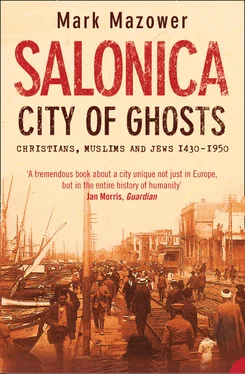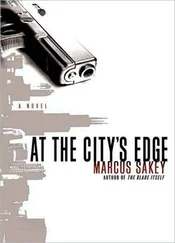Christians, Muslims and Jews 1430–1950

Copyright COPYRIGHT DEDICATION LIST OF MAPS INTRODUCTION PART ONE: The Rose of Sultan Murad 1 Conquest, 1430 2 Mosques and Hamams 3 The Arrival of the Sefardim 4 Messiahs, Martyrs and Miracles 5 Janissaries and Other Plagues 6 Commerce and the Greeks 7 Pashas, Beys and Money-lenders 8 Religion in the Age of Reform PART TWO: In the Shadow of Europe 9 Travellers and the European Imagination 10 The Possibilities of a Past 11 In the Frankish Style 12 The Macedonia Question, 1878–1908 13 The Young Turk Revolution PART THREE: Making the City Greek 14 The Return of St Dimitrios 15 The First World War 16 The Great Fire 17 The Muslim Exodus 18 City of Refugees 19 Workers and the State 20 Dressing for the Tango 21 Greeks and Jews 22 Genocide 23 Aftermath CONCLUSION: The Memory of the Dad GLOSSARY INDEX NOTES ACKNOWLEDGEMENTS ABOUT THE AUTHOR PRAISE ALSO BY THE AUTHOR ABOUT THE PUBLISHER
William Collins
An imprint of HarperCollins Publishers 1 London Bridge Street London SE1 9GF
www.harpercollins.co.uk
This edition published by Harper Perennial 2005
First published by HarperCollins Publishers 2004
Copyright © Mark Mazower 2004
Mark Mazower asserts the moral right to be identified as the author of this work
A catalogue record for this book is available from the British Library
All rights reserved under International and Pan-American Copyright Conventions. By payment of the required fees, you have been granted the nonexclusive, nontransferable right to access and read the text of this e-book on-screen. No part of this text may be reproduced, transmitted, downloaded, decompiled, reverse engineered, or stored in or introduced into any information storage and retrieval system, in any form or by any means, whether electronic or mechanical, now known or hereinafter invented, without the express written permission of HarperCollins e-books.
HarperCollins Publishers has made every reasonable effort to ensure that any picture content and written content in this ebook has been included or removed in accordance with the contractual and technological constraints in operation at the time of publication.
Source ISBN: 9780007120222
Ebook Edition © MARCH 2016 ISBN: 9780007383665
Version: 2016-08-24
Dedication DEDICATION LIST OF MAPS INTRODUCTION PART ONE: The Rose of Sultan Murad 1 Conquest, 1430 2 Mosques and Hamams 3 The Arrival of the Sefardim 4 Messiahs, Martyrs and Miracles 5 Janissaries and Other Plagues 6 Commerce and the Greeks 7 Pashas, Beys and Money-lenders 8 Religion in the Age of Reform PART TWO: In the Shadow of Europe 9 Travellers and the European Imagination 10 The Possibilities of a Past 11 In the Frankish Style 12 The Macedonia Question, 1878–1908 13 The Young Turk Revolution PART THREE: Making the City Greek 14 The Return of St Dimitrios 15 The First World War 16 The Great Fire 17 The Muslim Exodus 18 City of Refugees 19 Workers and the State 20 Dressing for the Tango 21 Greeks and Jews 22 Genocide 23 Aftermath CONCLUSION: The Memory of the Dad GLOSSARY INDEX NOTES ACKNOWLEDGEMENTS ABOUT THE AUTHOR PRAISE ALSO BY THE AUTHOR ABOUT THE PUBLISHER
To Marwa
COVER
TITLE PAGE SALONICA CITY OF GHOSTS Christians, Muslims and Jews 1430–1950
COPYRIGHT
DEDICATION
LIST OF MAPS
INTRODUCTION
PART ONE: The Rose of Sultan Murad
1 Conquest, 1430
2 Mosques and Hamams
3 The Arrival of the Sefardim
4 Messiahs, Martyrs and Miracles
5 Janissaries and Other Plagues
6 Commerce and the Greeks
7 Pashas, Beys and Money-lenders
8 Religion in the Age of Reform
PART TWO: In the Shadow of Europe
9 Travellers and the European Imagination
10 The Possibilities of a Past
11 In the Frankish Style
12 The Macedonia Question, 1878–1908
13 The Young Turk Revolution
PART THREE: Making the City Greek
14 The Return of St Dimitrios
15 The First World War
16 The Great Fire
17 The Muslim Exodus
18 City of Refugees
19 Workers and the State
20 Dressing for the Tango
21 Greeks and Jews
22 Genocide
23 Aftermath
CONCLUSION: The Memory of the Dad
GLOSSARY
INDEX
NOTES
ACKNOWLEDGEMENTS
ABOUT THE AUTHOR
PRAISE
ALSO BY THE AUTHOR
ABOUT THE PUBLISHER
The topography of the Balkans.
Inside the Ottoman city.
The first map of the Ottoman city, 1882, showing the new sea frontage.
The late Ottoman city and its surroundings, c.1910.
Area destroyed by the 1917 fire.
After the fire: the 1918 Plan.
The Balkans after 1918.
The 1929 Municipal City Plan.
Beware of saying to them that sometimes cities follow one another on the same site and under the same name, born and dying without knowing one another, without communicating among themselves. At times even the names of the inhabitants remain the same, and their voices’ accent, and also the features of the faces; but the gods who live beneath names and above places have gone off without a word and outsiders have settled in their place.
ITALO CALVINO, Invisible Cities 1
THE FIRST TIME I visited Salonica, one summer more than twenty years ago, I stepped off the Athens train, shouldered my rucksack, and left the station in search of the town. Down a petrol-choked road, I passed a string of seedy hotels, and arrived at a busy crossroads: beyond lay the city centre. The unremitting heat, and the din of the traffic reminded me of what I had left several hours away in Athens but despite this I knew I had been transported into another world. A mere hour or so to the north lay Tito’s Yugoslavia and the checkpoints at Gevgeli or Florina; to the east were the Rhodope forests barring the way to Bulgaria, the forgotten Muslim towns and villages of Thrace, and the border with Turkey. From the moment I crossed the hectic confusion of Vardar Square – ‘Piccadilly Circus’ for British soldiers in the First World War – ignoring the signposts that urged me out of the city in the direction of the Iron Curtain, I sensed the presence of a different Greece, less in thrall to an ancient past, more intimately linked to neighbouring peoples, languages and cultures.
The crowded alleys of the market offered shade as I pushed past carts piled high with figs, nuts, bootleg Fifth Avenue shirts and pirated cassettes. Tsitsanis’s bouzouki strained the vendors’ tinny speakers, but it was no competition for the clarino and drum with which gypsy boys were deafening diners in the packed ouzeris of the Modiano food market. Round the tables of Myrovolos Smyrni [Sweet-smelling Smyrna], its very name an evocation of the glories and disasters of Hellenism’s Anatolian past, tsipouro and mezedes were smoothing the passage from work to siesta. There were fewer back-packers in evidence here than in the tourist dives around the Acropolis, more housewives, porters and farmers on their weekly trip into town. Did I really see a dancing bear performing for onlookers in the meat market? I certainly did not miss the flower-stalls clustered around the Louloudadika hamam (known also according to the guidebooks as the Market Baths, the Women’s Baths, or the Yahudi Hamam , The Bath of the Jews), the decrepit spice warehouses on Odos Egyptou [Egypt Street], the dealers still installed in the old fifteenth-century multi-domed bezesten. This vigorous commercialism put even Athens to shame: here was a city which had remained much closer to the values of the bazaar and the souk than anything to be seen further south.
Читать дальше












